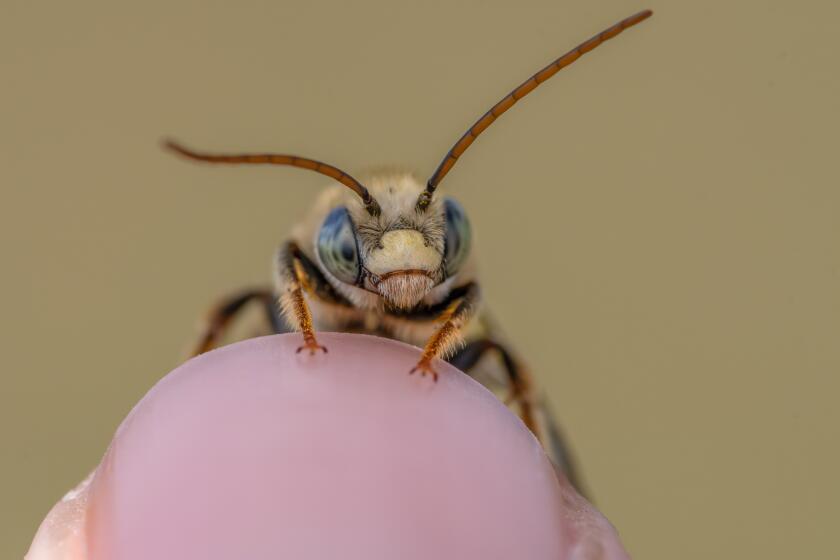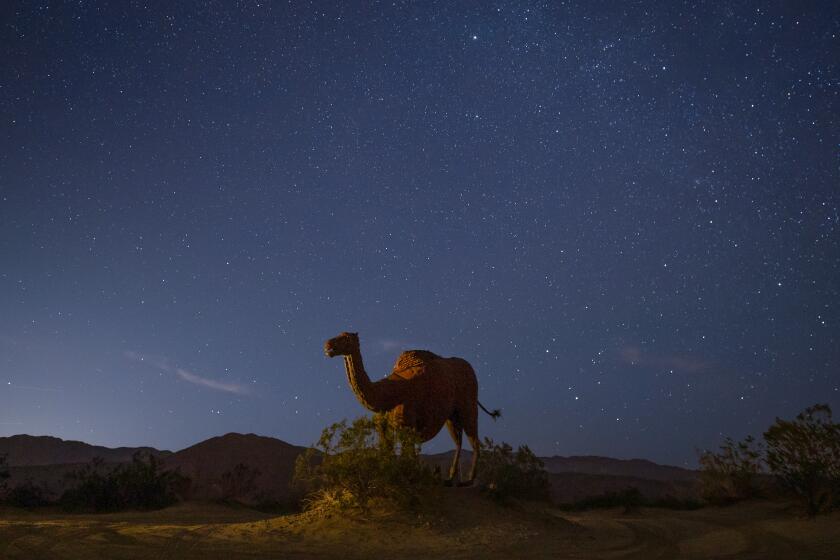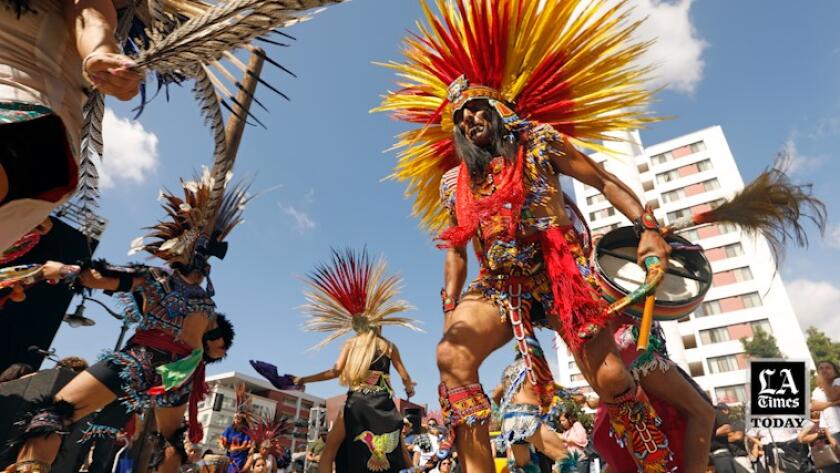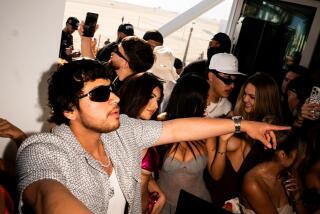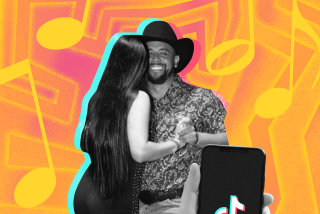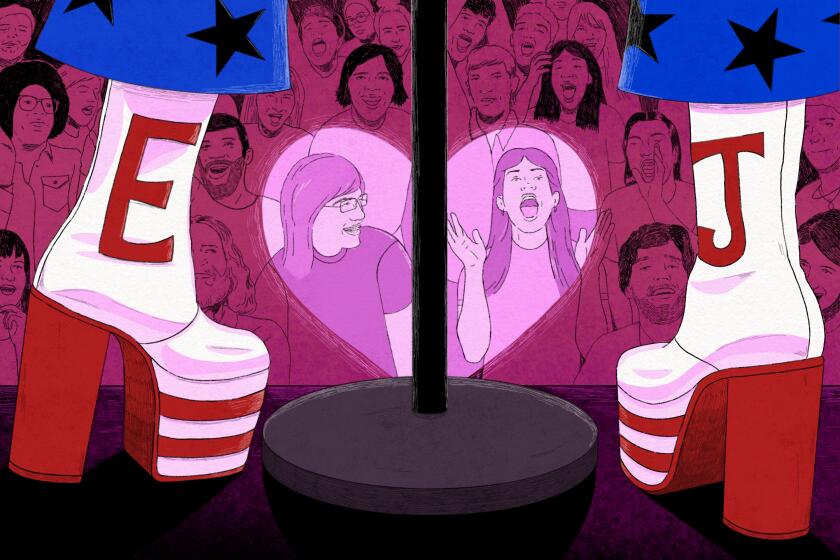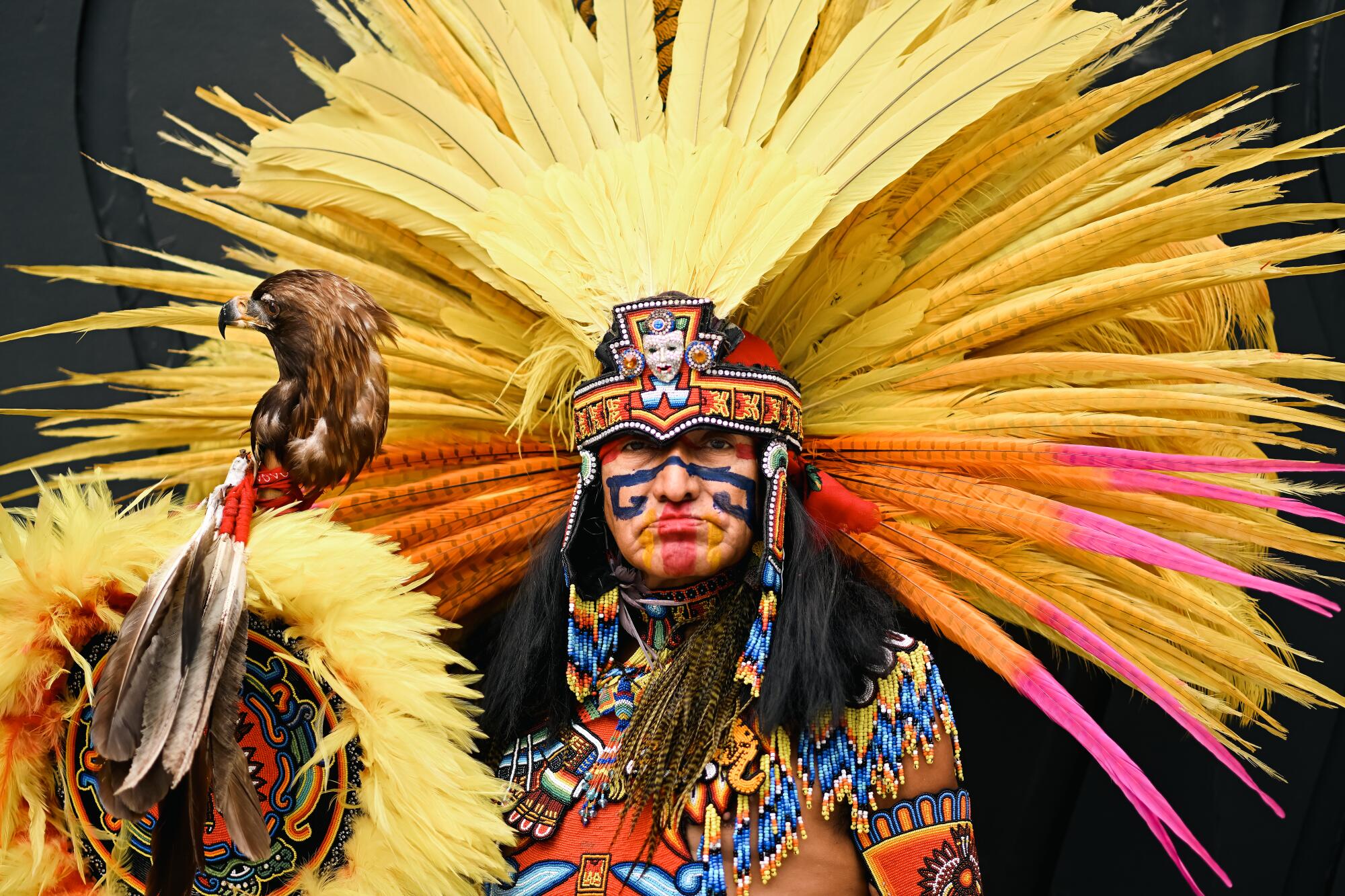
Twenty-two Indigenous dancers move as one in a circle with a man dancing in the middle. They call him “el general.”
Lazaro Arvizu has dedicated his life to promoting Danza Azteca, a spiritual Indigenous tradition from Mexico, in Los Angeles for more than four decades. “It’s a way to pray. Our ancestors teach us to pray with dancing and singing,” Arvizu says.
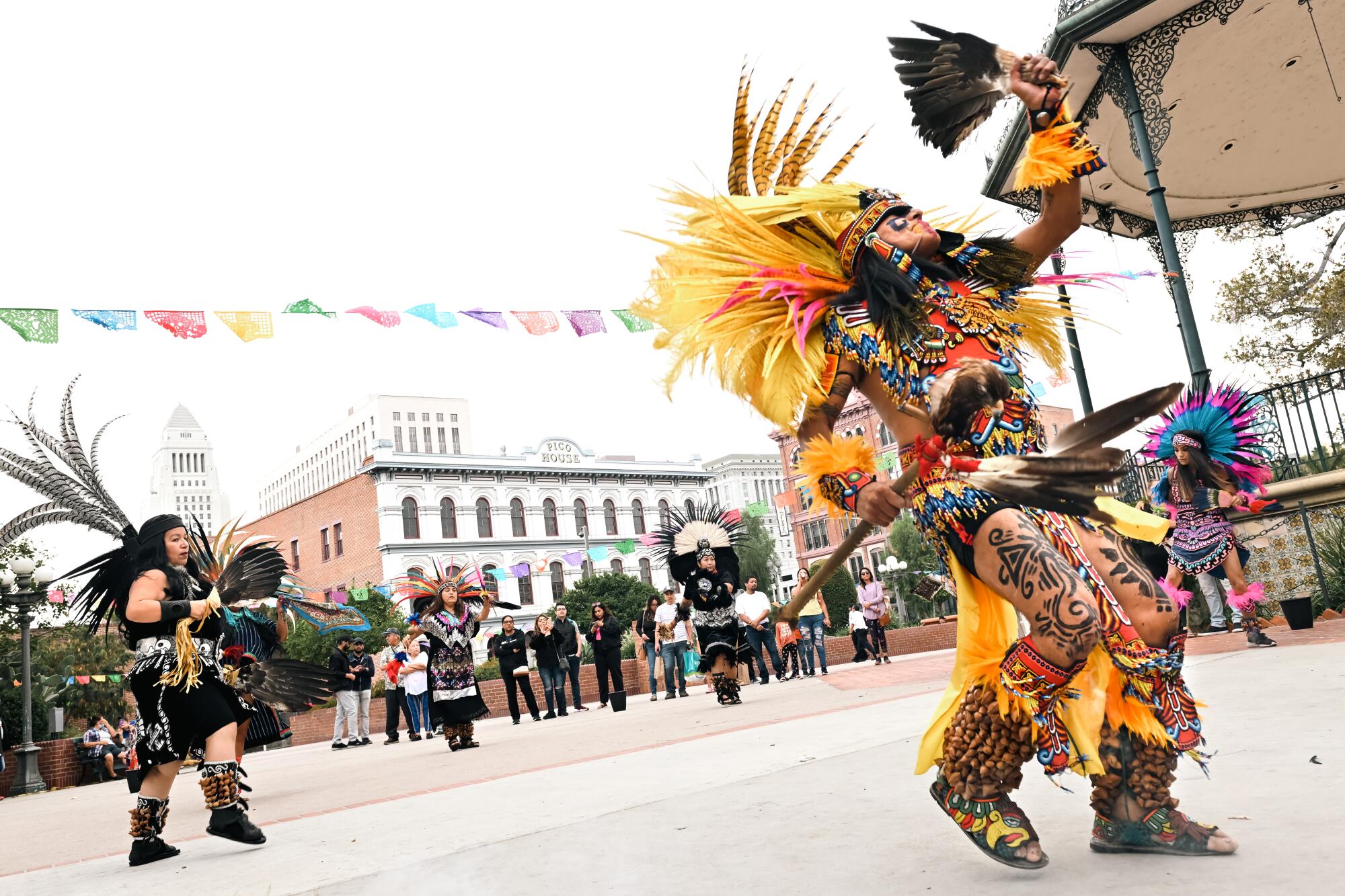
At the Plaza de la Raza community center where this dance circle named Xipe Totec gathers, the cement outside is harsh, but some dancers still practice barefoot. They wear ankle rattles known as chachayotes, and some hold rattles in their hands. Before practice begins, one dancer uses the ceremonial copal incense burner (resin derived from tree sap) to clear bad energy. “We ask permission from the elements and four directions. We ask the universe for permission to touch the Earth,” Arvizu explains.
Seven drummers stand by tall Aztec drums known as huehuetl (made from wood and animal skin). As the beat picks up and builds, the dancers change formation. The general moves into the middle; at 65, his steps are still strong and precise.
Arvizu is one of the few dancers on this side of the border to hold the “general” title. In Danza Azteca, military titles like general, capitán and sargento are bestowed upon esteemed dancers who dedicate their lives to teaching and preserving their ancestors’ traditions. His students, some of whom now lead their own circles across the country, are his legacy — growing awareness and interest in Danza Azteca.
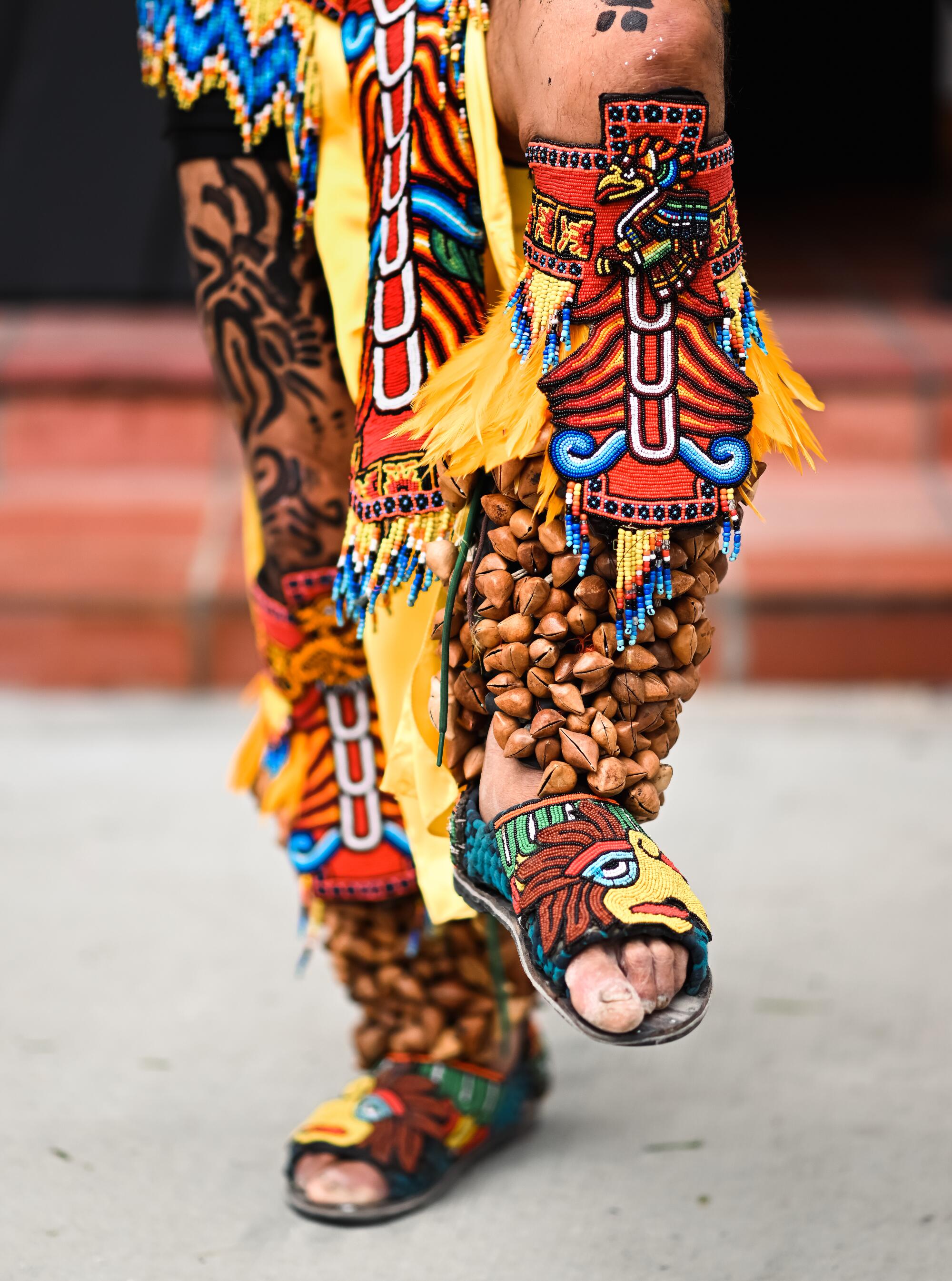
During the ’70s, a 14-year-old Arvizu first traveled to San Diego with his teacher, Florencio Yescas — widely known for his contributions to Danza Azteca — on a “reconquering” mission to bring danza to the Chicano people in the United States.
Arvizu says he had just 200 pesos when Esplendor Azteca, a band of 12 dancers, set out to tour Mexico in 1971. They were invited later to San Diego, with a smaller contingent continuing to dance and teach around the U.S. Danza Azteca performances served as another way for Mexican Americans to reconnect with their history and culture during the Chicano Movement.
Born in Mexico City, Arvizu spent his teen years immersed in Danza Azteca there. Since 1978, he’s led an Eastside dance circle formed with Yescas’ blessing. Initially he led the group with his partner, Virginia Carmelo. It was the only consistent Danza Azteca group in the nation for about a decade. Over the years, the original troupe branched off into several Xipe Totec factions. Carmelo founded her own L.A. circle after she and Arvizu amicably separated. When Yescas died in 1985, his followers recognized Arvizu as his heir and the de facto Danza Azteca leader in the United States.
While Arvizu travels to perform at Indigenous gatherings and educational events across the country, Los Angeles has a special draw as a home base because it represents so much of Mexico. “I’ve spent most of my life here, and you don’t need to speak English sometimes because everybody speaks Spanish,” Arvizu says. “[There’s] nothing like L.A. I love L.A.” You may find him regularly leading dances on the red-bricked walkways of La Placita Olvera when the historic district celebrates Mexican Independence Day, Día de los Muertos and the Day of the Virgin of Guadalupe.
Artist-turned-community scientist Krystle Hickman quit the 9-to-5 life to find her passion: photographing California’s endangered native bees.
To pass down Danza Azteca to future generations, Arvizu pays special attention to welcoming youths to his circle, but sometimes they come to him. “They come looking for an identity, [to find] where they come from,” he says. Others are born into it and start dancing just as they start walking.
Aleah Alba, 7, is the youngest member of the group. Aleah and her mom, Marlene Alba, have been with the circle for two years. For the first few months of attending practices with her mom, Aleah wasn’t interested in dancing, but when she finally decided to try, it was clear she had been paying attention. “I try to go in the circle and try my best. Sometimes we have ceremonies and it’s really serious and you can’t mess up. That’s why we have practice,” Aleah says. To her mom, seeing Aleah connect with their cultural heritage is gratifying. “Every time she dances, I’m a proud mom,” Marlene says.
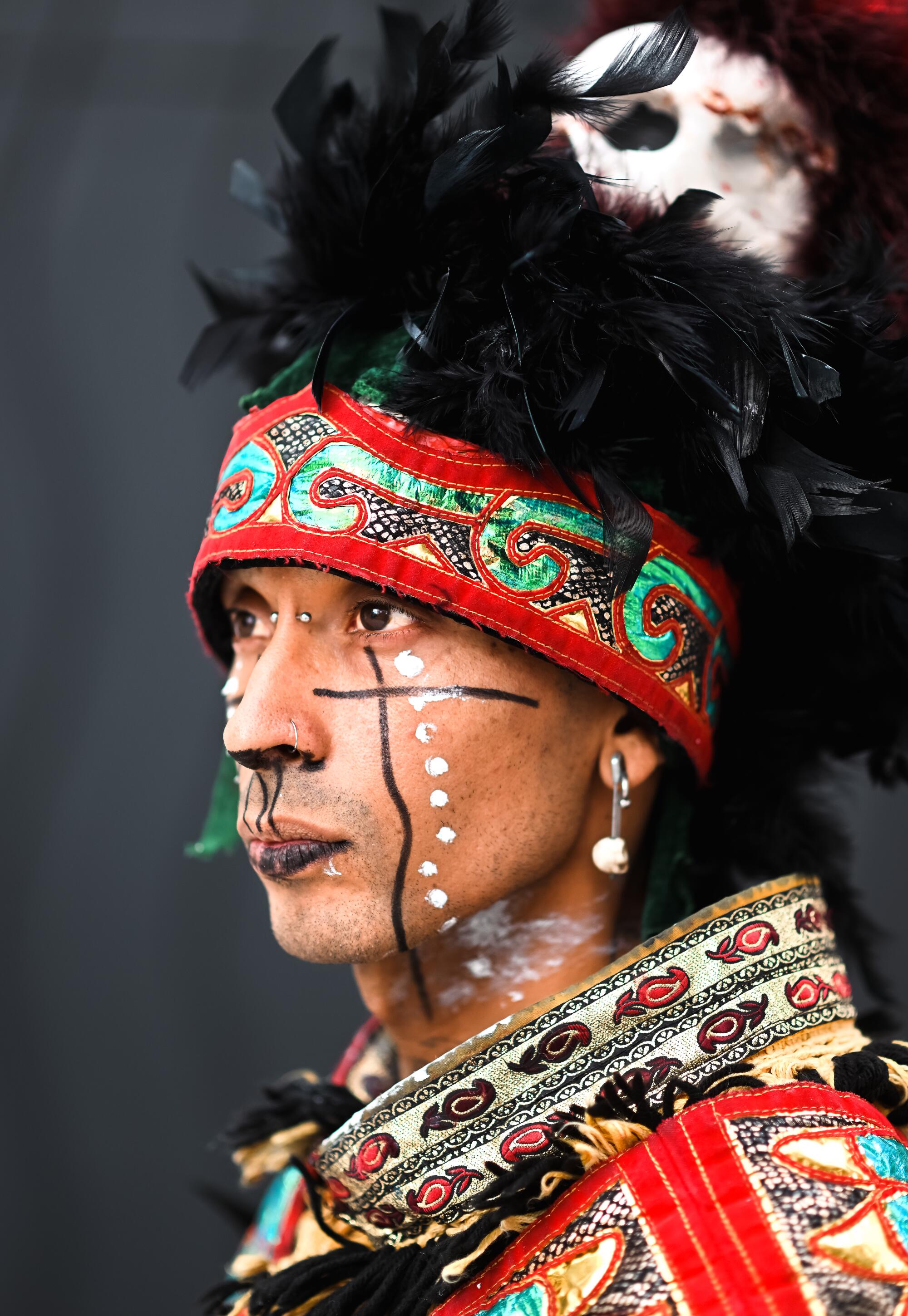
Arvizu also appreciates the younger generation’s progressive efforts, and consequently, the group has been using social media increasingly in the last few years to grow an online presence.
He has trained his circle members to carry on when he is gone. But the world of Danza Azteca extends beyond Arvizu too. While some of his students start their own circles with Arvizu’s permission — like he received from Yescas — there are also those who, despite being new to the dance, may still break off on their own. Arvizu believes people with little experience who don’t follow tradition are diluting the cultural practice, but not everyone agrees.
Adolfo Arteaga and his wife, Eva Arteaga, started a circle called Danza Azteca Xochipilli with Arvizu’s blessing. A blessing is important because in Danza Azteca there is an order to everything. When an elder feels a student is ready and comes with good intentions, they are granted this blessing. Adolfo recently gave his blessing to a student who moved out of state to start her own circle there. He is selective about who joins his group, though, which serves as an all-ages Indigenous community resource and provides a safe space for local youth. (He weeds out those more interested in meeting women than in upholding the mission, for example.)
Adolfo’s circle meets at the East Los Angeles Civic Center Plaza. During a recent practice, a mother walking by with her children stopped to watch. One of the kids started mimicking the steps. The circle’s firekeeper (responsible for cleansing the dancers) blew incense over the children, with the mother’s permission, and invited them to join the circle.
Along with some of Arvizu’s protégés, his contemporaries have had a hand in advancing the danza tradition across the country. Mario Aguilar, who also learned from Yescas, leads a dance circle in San Diego through a nonprofit called the Mexi’cayotl Indio Cultural Center. Aguilar says he has been teaching and dancing for just as long as Arvizu. Recalling when he first met Arvizu, Aguilar says he could tell that “Lazaro had the style and the skill as a dancer just like Florencio.”
The dark skies, spring wildflowers, stark mountains and big metal creatures of this San Diego County desert are drawing L.A. travelers who really want to get away from it all.
Arvizu and Carmelo also kept the tradition alive through their four daughters and two sons. Citlali Arvizu, their eldest daughter, says, “We were all born dancing in the tradition. So from the time that we could stand, we were dressed and participating. You know, my mother danced pregnant with all of us.” Citlali is now an active leader in her mother’s branch of Xipe Totec. Although she was estranged from her father for many years after her parents’ separation, she has since reconnected with him. For Citlali, the best thing about renewing their relationship has been getting to learn more of her father’s story.
Virginia Arvizu-Sanchez, one of the couple’s younger daughters, says she refused to dance for a long time as a child. “I knew when I could test the limits. I would only dance when I absolutely had to,” she says. She drummed, beaded and helped out with dance attire, known as regalia, but only really started her danza journey when she turned 16; she felt the need to become more integrated with her family’s dance heritage.
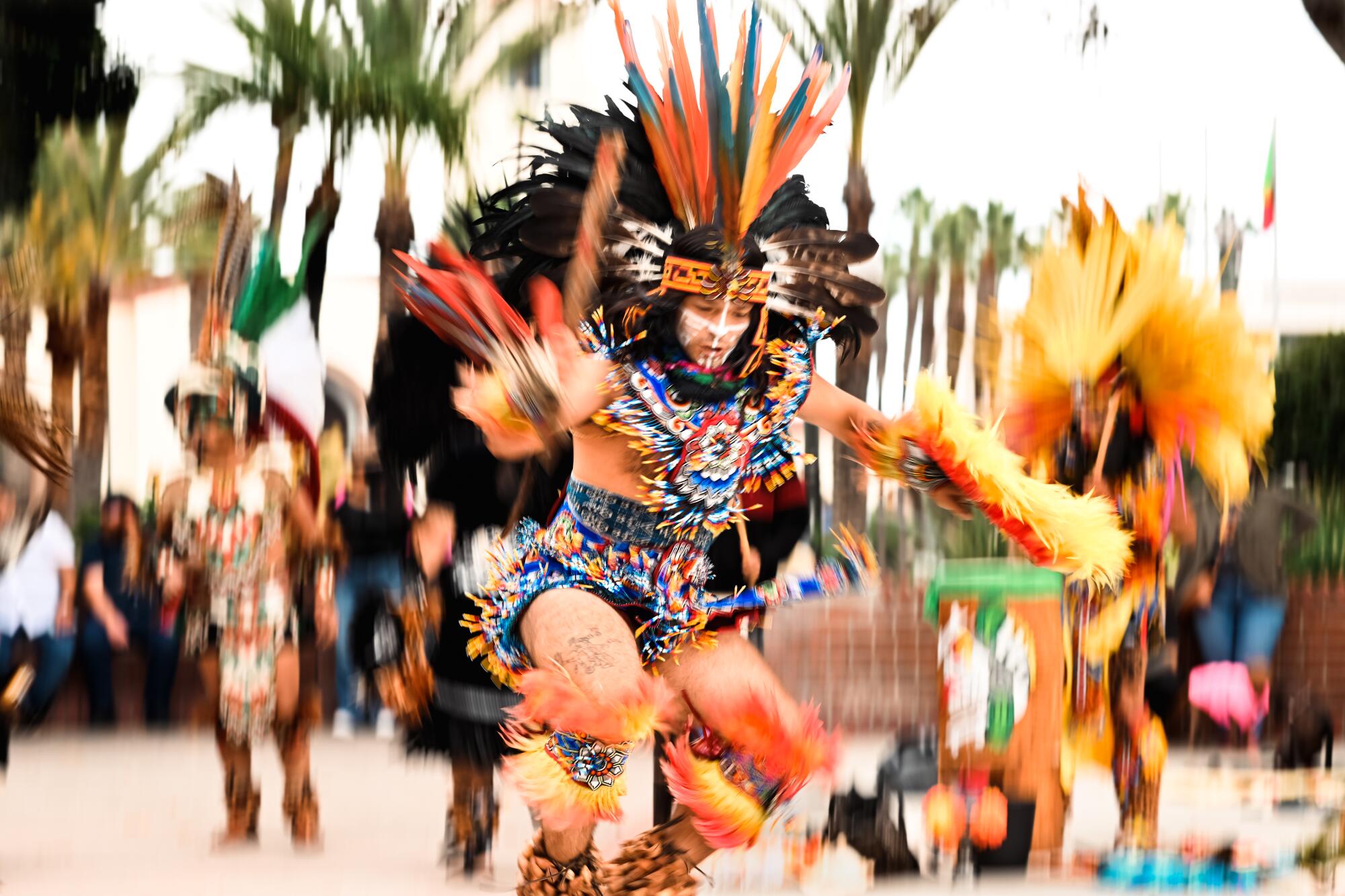
Arvizu’s grandchildren all dance as well, but Virginia emphasizes that things are different now. “It’s not something that’s pressed on them the way it was back in the day,” she says. Traditionally, when it comes to the inheritance of Arvizu’s responsibility, it goes to his first male child, also named Lazaro, but the son is unsure if he wants to make that lifelong commitment. When the time comes, the family will have to make a decision, Citlali says. “In Mexico, when this happens, sometimes it’s not the person that you planned. But somebody usually picks it up and takes it.”
It can be all-consuming and expensive to maintain the tradition and hard to find free indoor public spaces for practice. Besides getting help to keep the circle going through donations and some grants over the years, Arvizu has had several jobs on the side — most recently working in construction and selling perfumes during the pandemic. He is also a skilled artisan and continues to pass on his teachings when it comes to beading, traditional featherwork and making regalia. In July, Vogue featured a necklace, earrings, waist piece and shoes made by Arvizu in a series spotlighting young climate activists.
A ‘silent disco’ in Long Beach teaches us how to feel good again.
“Before, you had to earn the feathers,” Arvizu says. “Now you can buy it if you have money.” The commercialization and cultural appropriation of the Indigenous tradition are not easy to escape. Arvizu fights his fight as he shows his students the symbolic and spiritual meanings attached to the regalia — explaining how they are designed based on a sacred animal or element or Aztec gods and goddesses.
When asked if he feels he has accomplished what he set out to do in the ’70s, Arvizu immediately says, “No, no, no.” He shakes his head and insists he is not done.
There is much more he still hopes to contribute to the danza community. He recently had hernia surgery and was instructed to stay off his feet for several weeks but was back at practice after only a week of bed rest. While he is taking breaks as he recovers, he doesn’t plan to stop. The danza is so embedded in him, he needs it to feel alive.
Watch L.A. Times Today at 7 p.m. on Spectrum News 1 on Channel 1 or live stream on the Spectrum News App. Palos Verdes Peninsula and Orange County viewers can watch on Cox Systems on channel 99.
More to Read
Sign up for The Wild
We’ll help you find the best places to hike, bike and run, as well as the perfect silent spots for meditation and yoga.
You may occasionally receive promotional content from the Los Angeles Times.
